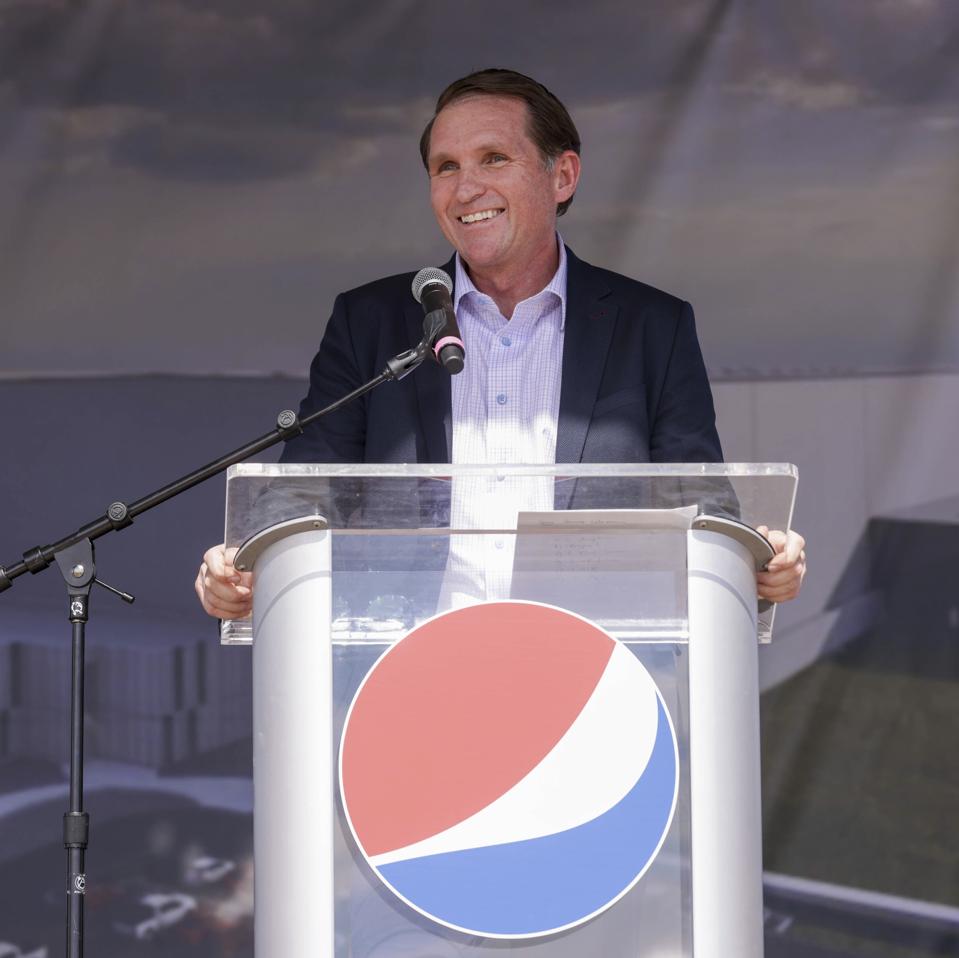Wendy’s new president and CEO, Kirk Tanner, started his first month by firing up the public during the quarterly earnings call about a plan to use dynamic pricing to help increase the company’s margin opportunities. Many pundits have criticized the move since food is a non-discretionary category of spending and changing prices based on demand may unfairly disadvantage lower income families. “Beginning as early as 2025, we will begin testing more enhanced features like dynamic pricing and day-part offerings along with AI-enabled menu changes and suggestive selling,” said Tanner.
Consumers expect dynamic pricing for plane tickets and Uber
UBER
Kirk Tanner spent 32 years at PepsiCo before becoming Wendy’s new CEO in February 2024. (Kim Cook/AP … [+]
After generating much comment and controversy over the dynamic pricing statement, Wendy’s came back a week and a half later with a statement clarifying the intention of the company. The company stated they were looking to advantage customers by lowering prices and using digital menu boards to give more flexibility to change the display of featured items. “One initiative is digital menu boards, which are being added to U.S. company-operated restaurants. We said these menu boards would give us more flexibility to change the display of featured items. This was misconstrued in some media reports as an intent to raise prices when demand is highest at our restaurants. We have no plans to do that and would not raise prices when our customers are visiting us most,” stated Wendy’s media.
However, in the earnings call, it was clear that the $30 million investment in its digital menus using artificial intelligence (AI) technologies would be tested to increase company profits by changing prices and using suggestive selling of items to increase order size. “As we continue to show the benefit of this technology in our company-operated restaurants, franchisee interest in digital menu boards should increase, further supporting sales and profit growth across the system,” said Tanner in the earnings call.
Wendy’s Public Relations Digs Deeper Hole
Wendy’s is investing $30 million to replace existing menus (pictured) with new digital menus that … [+]
After pushback from the public, Wendy’s tried to clarify the intent of this comment by the CEO by stating, “Digital menu boards could allow us to change the menu offerings at different times of day and offer discounts and value offers to our customers more easily, particularly in the slower times of the day.” The statement by Wendy’s Media does not support the context of higher profits since lowering the prices would reduce margins. It was clear by the earnings call and Tanner’s comments that the company planned to use AI technology and digital pricing to advance its profits further.
Competitors Poke Fun at Wendy’s
The good news for Wendy’s customers is that the company has stated it has no intention of raising its prices during peak periods and plans to add more value offers and discounts. The bad news for Wendy’s is that its competitors have already taken advantage of this misstep by the company, allowing them to make fun of Wendy’s. Burger King tweeted, “We don’t believe in charging people more when they’re hungry.” The company then offered discounts on Whoppers for the rest of the week.
Don’t Try To Fool Today’s Empowered Customer
Reducing pricing at slower times has two benefits. The first is to reduce waste since prepared food is perishable. The second is that lower pricing during slower times helps to better match customer demand to staffing needs, especially in brick-and-mortar locations like restaurants and fast food chains. Happy hour and early bird specials are examples of this tactic.
Using dynamic pricing and digital menus for margin improvement means selling items at higher prices to recoup a better margin and/or selling higher profit items. The latter can be accomplished by highlighting these items when the restaurants are busy.
Most people understand that companies need to make a profit. The uproar was driven by Wendy’s comments regarding the use of dynamic pricing to help drive the company’s profits, which often means surge pricing during peak times in the eyes of the consumer. The CEO is not solely to blame. As with all earnings calls, these statements are prepared in advance and approved by the media team. Even so, it was probably a big misstep for a CEO’s first month on the job. Tanner, who spent 32 years at PepsiCo, should have known better after Coca-Cola’s
KO


